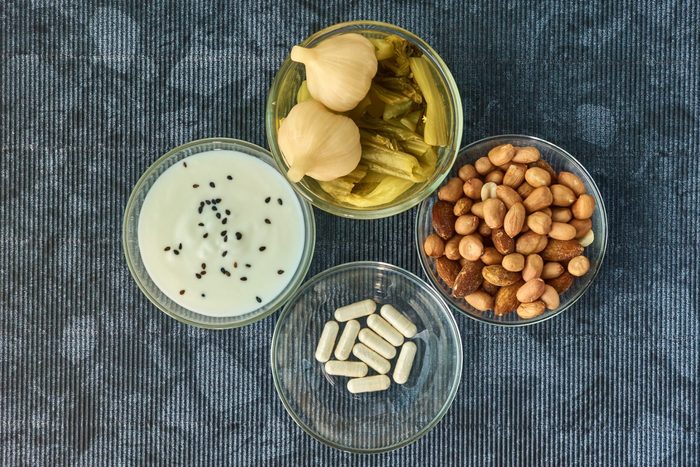
Gut health basics
When it comes to disease prevention and overall wellness, it’s a good idea to pay attention to the health of your gut microbiome. That’s the billions of teeming bacteria and other organisms found in your intestines that help digest your food and regulate your immune system. In fact, as much as 70 percent of our entire immune system is in the gut, according to the Journal of Translational Immunology. The gut microbiome may impact everything from body weight to blood sugar regulation, and even mood, according to reports published in journals like Cell, the Postgrad Medical Journal, and Brain, Behaviour and Immunity.
When it comes to supporting gut health, it’s a good idea to focus on both prebiotics and probiotics. Here’s what you need to know.
(Related: Find out if you should take a probiotic supplement.)
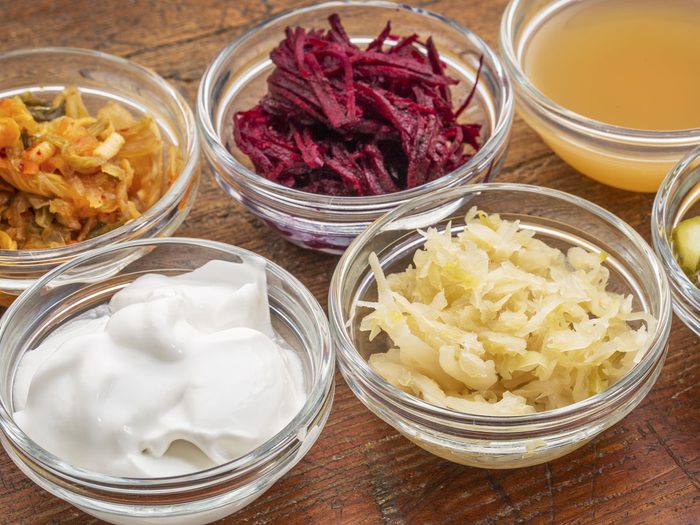
What are prebiotics?
Many people are familiar with the health benefits of probiotics, but fewer people understand the role prebiotics play in maintaining a healthy gut. Probiotics are live bacteria. Meanwhile, prebiotics are substances found in plants that the body cannot digest. The healthy bacteria in your gut—probiotics—use these substances as food.
And as the beneficial bacteria consume the prebiotic substances, they produce nutrients such as short-chain fatty acids that can offer health benefits in the digestive tract as well as throughout the body, according to Frontiers in Microbiology.
Where do prebiotics come from?
Although all prebiotics are a form of fibre, not all fibre is a prebiotic.
Prebiotic substances come from plant sources, including vegetables, fruits, and complex carbohydrates, including grains such as oats. Just as there are multiple strains of probiotics, there are a variety of prebiotics as well. “Prebiotics are broken into five known categories based on their structural characteristics and the byproducts they produce,” explains registered dietitian nutritionist Grace Clark-Hibbs, owner of Nutrition with Grace. These categories include fructans, galacto-oligosaccharides, resistant starch and glucose-derived oligosaccharides, oligosaccharides, and non-carbohydrate oligosaccharides, according to the journal Foods.
“Consuming a range of prebiotics is important in order to appeal to a wider variety of organisms and to reap the most benefits,” Clark-Hibbs says.
(Related: Prebiotics vs. Probiotics: What’s the Difference?)
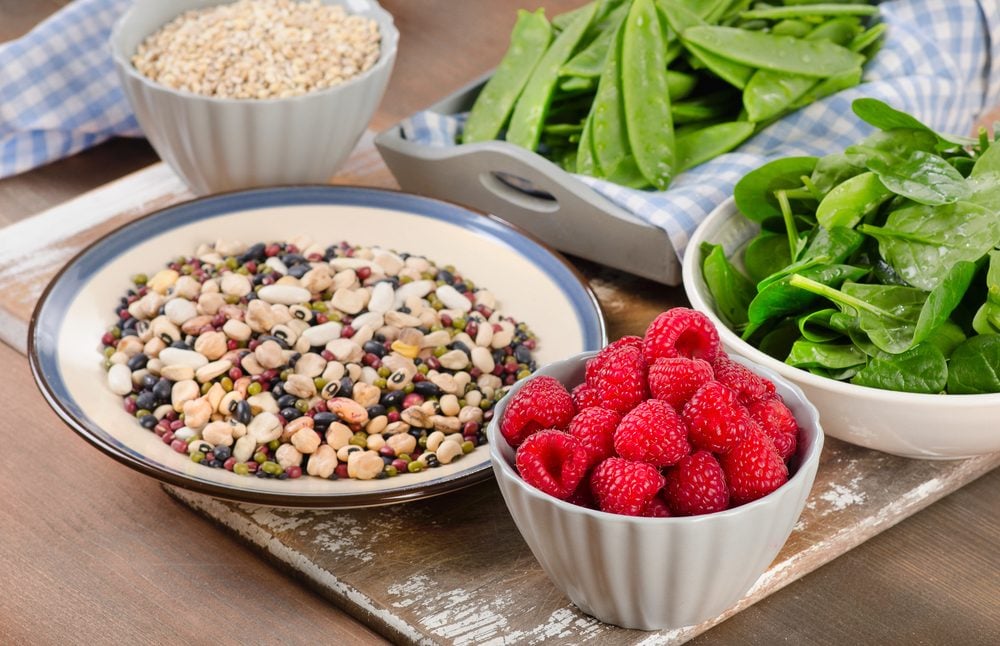
How do prebiotics affect the gut?
The main benefit that prebiotics offer to gut health is the nutrients they produce after they are metabolized. “When prebiotics are metabolized by the microorganisms in your gut, they produce short-chain fatty acids as a byproduct, which provide a variety of benefits throughout the body,” explains Clark-Hibbs. These benefits range from supporting the growth of beneficial bacteria in the gut to enhancing nutrient absorption, and reducing inflammation, according to a review in Nutrients.
“Prebiotics can enhance absorption of nutrients, in particular minerals like calcium, optimize digestion and metabolism, and reverse damage to the gut environment due to prolonged antibiotic use,” says registered dietitian nutritionist Ilene Cohen, of PranaSpirit Nutrition & Wellness.
Benefits of eating prebiotic foods
Adding more prebiotic foods to your diet may benefit more than just your gut.
“As a form of dietary fibre, prebiotics may help you feel full at meals, promoting weight management,” explains registered dietitian nutritionist Lacy Ngo, author of The Nourishing Meal Builder. In addition, diets rich in fibre can reduce the risk of many chronic diseases, including heart disease, diabetes, cancer, she notes.
And the benefits don’t come from fibre alone. Metabolizing prebiotics also produces short-chain fatty acids that can impact the entire body. “These fatty acids are small enough to squeeze through the cells that make up your intestines and enter the bloodstream where they are able to provide health benefits to your immune system, mood, memory, and reduce overall inflammation,” Clark-Hibbs says.
(Related: How to Build a Strong Microbiome to Improve Your Gut Health)
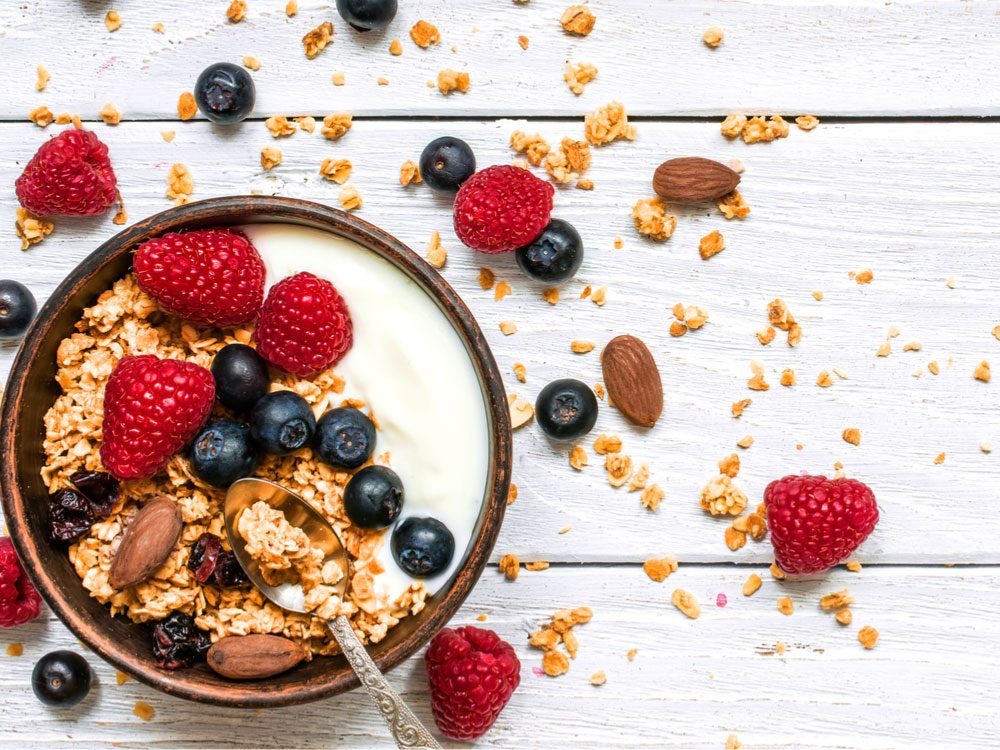
How much prebiotic food do we need each day?
It is apparent that eating more prebiotic-rich food can benefit health, but how much is enough? “Currently, there is no official ‘adequate intake’ or ‘recommended daily allowance’, but the International Scientific Association for Probiotics and Prebiotics (ISAPP) recommends at least 3 grams of prebiotics per day,” explains Clark-Hibbs.
Although it can be hard to know exactly how much prebiotic fibre you take in each day, eating more fibre as a whole can be a good place to start. “The recommended daily intake for fibre is 14 grams per every 1,000 calories consumed, or 28 grams of fibre for a 2,000 calories diet,” Ngo says. “If you eat this amount of fibre each day, you would be consuming an adequate amount of prebiotics.”
The best way to eat prebiotic foods
Since prebiotic research is still relatively new, there is not much data on the impact of food preparation on all forms of prebiotics. Although some studies suggest temperature can affect the level of prebiotics a food contains. “One study found that when cooked white rice is cooled in refrigeration and reheated after 24 hours, it has a higher levels of the prebiotic fibre resistant starch than freshly cooked white rice,” says Clark-Hibbs, referencing research in the Asia Pacific Journal of Clinical Nutrition.
And if you can avoid prolonged heat exposure to food sources of prebiotics, that may be beneficial as well. “Try not to overcook your fibre-rich foods, because heat can decrease the fibre content,” explains Ngo.
When it comes to food sources of prebiotics, there are a few that stand out from the crowd. This is the best prebiotic food list, according to top nutrition experts.
(Related: 7 Common Probiotic Mistakes You’re Making)
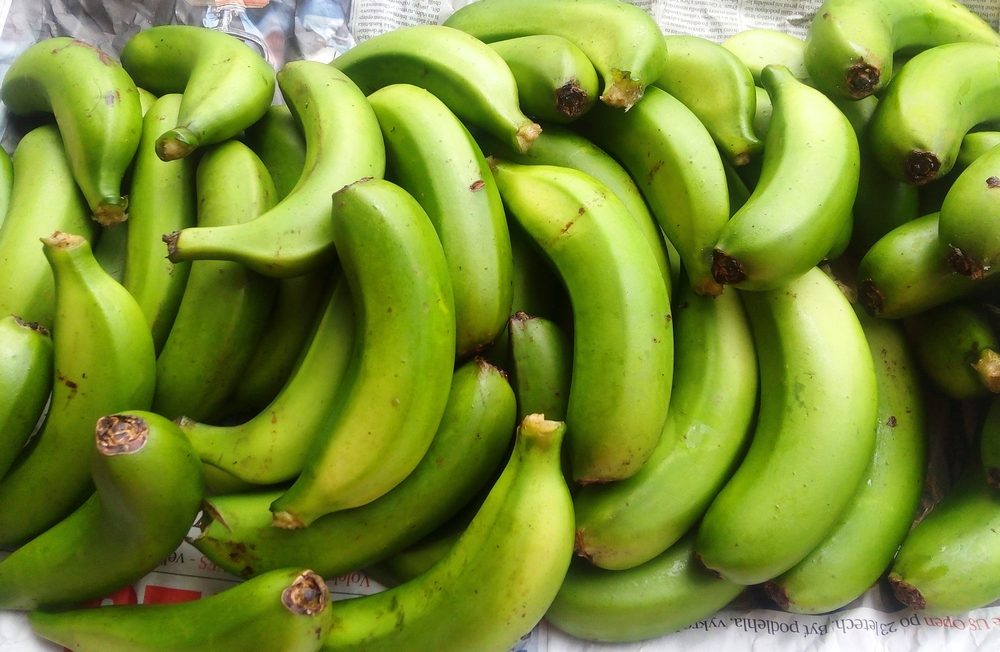
Unripe (green) bananas
Although all bananas provide a source of fibre, it is the unripe, green bananas that are ideal for prebiotics.
“Unripe (green) bananas are a great source of resistant starch, and that acts as a soluble fibre passing through the digestive system undigested until it reaches the large intestine,” Clark-Hibbs says. “Once in the large intestine, it acts as a fuel source for the good gut bugs that live there and may help reduce inflammation and protect against colorectal cancer.”
If you are looking for a way to enjoy green bananas, try slicing them up and baking or frying them with a hint of salt for a crunchy, gut-friendly snack. Or, try this recipe for banana, date and chia muffins.
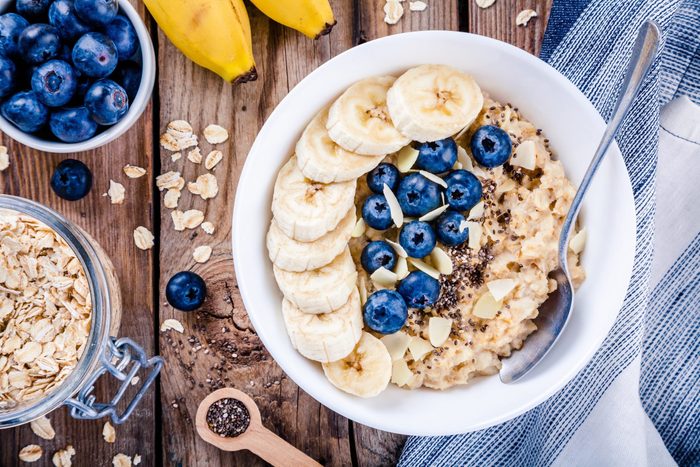
Oats
Oats provide a good source of fibre and whole grain, including the prebiotic fibre beta-glucan. “The beta-glucan found in oats has a cholesterol-lowering benefit and may also help improve gut function,” explains Cohen. And the benefits of this fibre don’t stop there. Clark-Hibbs adds that some research has found this fibre also boosts your immune system and protects against certain cancers.
Oats can be added into your diet in a number of ways, from using rolled oats in overnight oatmeal to swapping out refined flour in your favorite baked goods with oat flour instead.
Try Bob’s Red Mill Rolled Oats, Gluten-Free ($10, houseofwellness.ca), and use them in these oat recipes for every time of day.
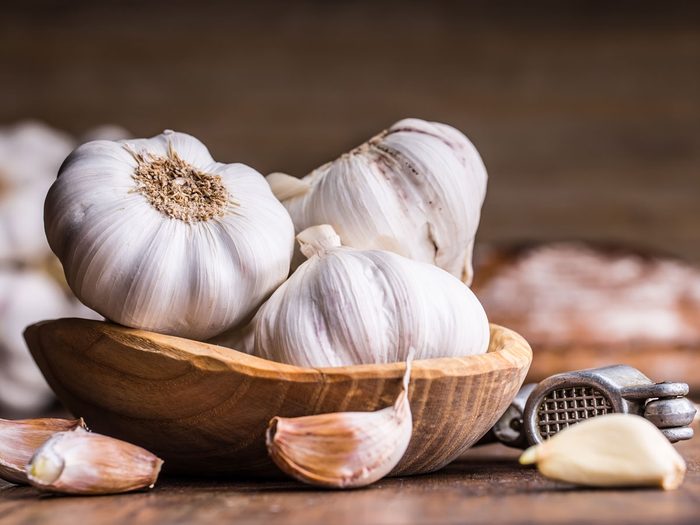
Garlic
If you love the taste of garlic, you are in luck. “Garlic is high in the prebiotic inulin which has been shown to benefit overall digestion, diversify the gut microbiome, decrease fat accumulation, and improve appetite control,” Clark-Hibbs says.
And gut health isn’t the only benefit of adding more of this vegetable to your plate. “Garlic has also been shown to help prevent diseases such as cancer, heart disease, high blood pressure, and type 2 diabetes,” adds Clark-Hibbs.
Try adding garlic into your favorite sauces and marinades or even into salad dressing as an easy way to flavour your foods while boosting your intake of prebiotics at the same time.
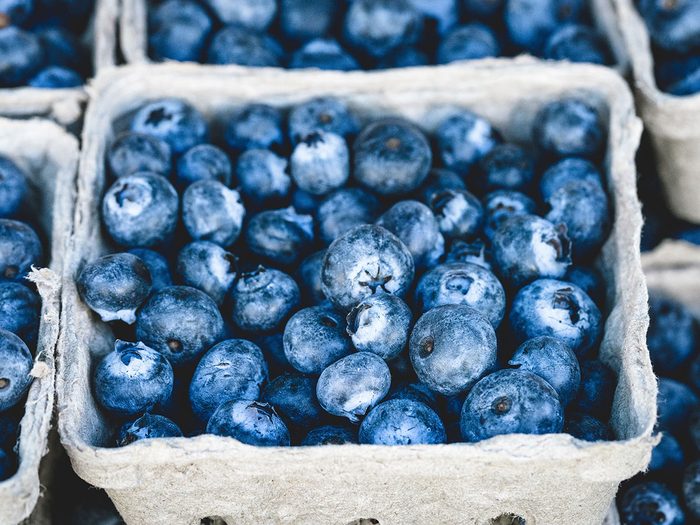
Blueberries
If you want to add more prebiotics to your plate, focus on eating a variety of colours, such as the deep blue and purple colour of blueberries. “Blueberries are a wonderful prebiotic to include in your daily diet because they not only promote gut health, but also brain health as well,” explains Ngo.
The polyphenols in blueberries act as a source of prebiotic, allowing them to provide anti-inflammatory benefits and cardiovascular benefits, especially in those with metabolic syndrome, according to the Journal of Functional Foods and the American Journal of Clinical Nutrition.
Try adding blueberries into smoothies, on top of probiotic yogurt, or into salads as an easy way to boost your intake throughout the day.
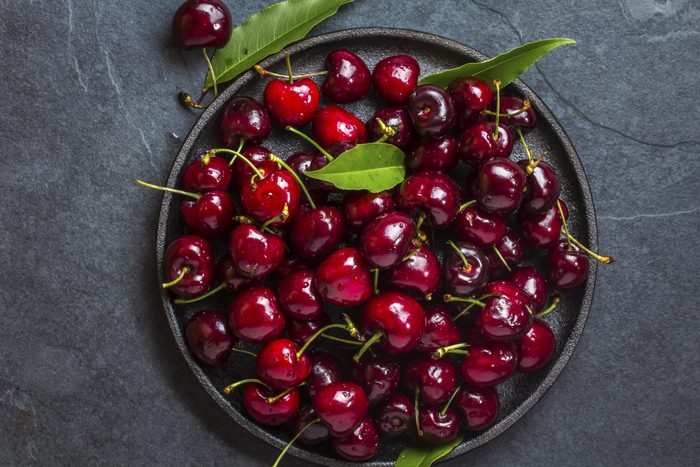
Tart cherries
If you want to promote gut health and improve sleep, consider adding tart cherries to your diet. “Try eating tart cherries before bed for a source of prebiotic that also contain melatonin, which promotes a good night’s sleep,” explains Ngo.
Research in the Journal of Nutritional Biochemistry found the polyphenols in tart cherries act as a prebiotic and may positively impact the gut microbiome.
To enjoy the benefits this sour fruit can offer, try adding them into smoothies or a homemade trail mix or snacking on them alone.
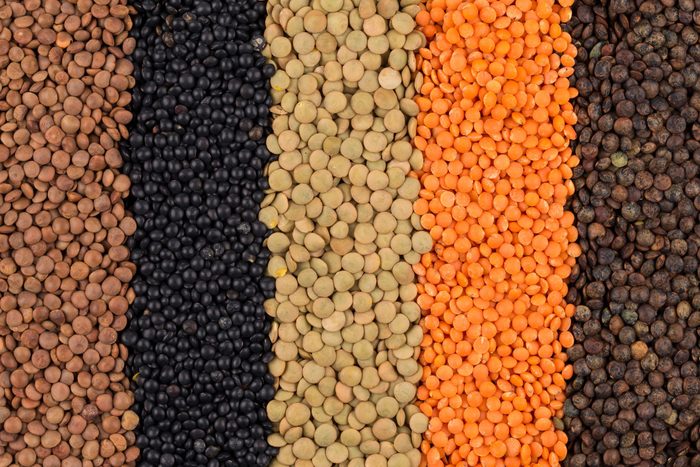
Lentils
If you are looking to boost your overall dietary fibre intake, lentils are an excellent choice providing eight grams of dietary fibre per 1/2 cup serving, according to the U.S. Department of Agriculture. As a source of multiple forms of prebiotics, including resistant starch and oligosaccharides, lentils may provide a variety of gut health benefits along with benefits for your entire body, per the journal New Phytologist.
“Lentils provide good quality plant-based protein and contain polyphenols which are helpful in reducing heart disease risk while being the easiest to digest of any legume,” explains Cohen.
Try adding cooked lentils to soups, chili, or top of a salad for a protein and fibre rich nutrition boost.
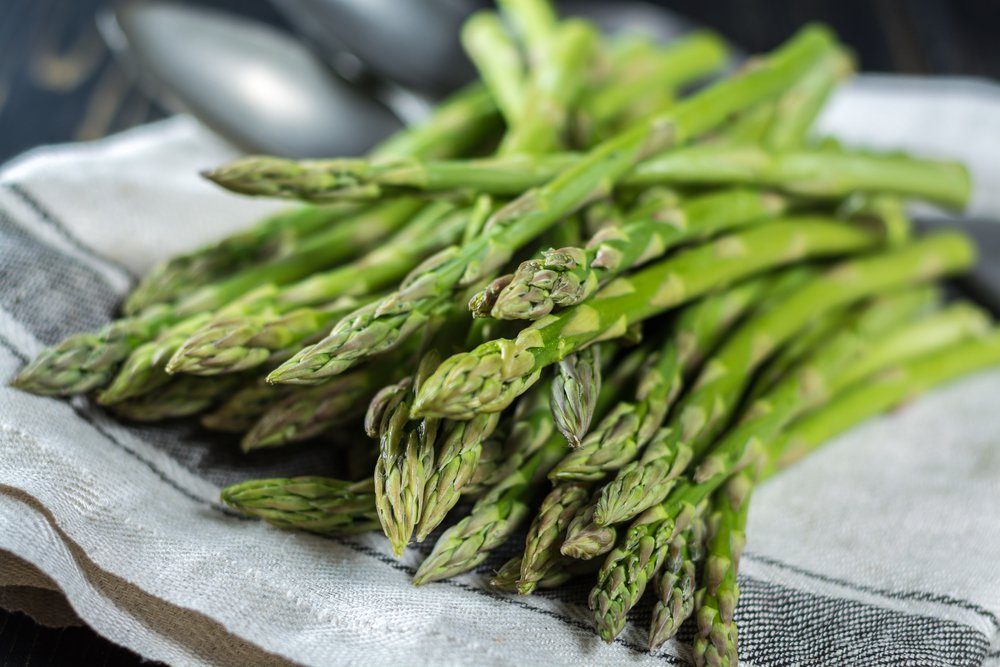
Asparagus
This vegetable naturally contains the prebiotic fibre inulin, which has been found to aid digestive health while helping to maintain healthy blood glucose and insulin levels.
“Asparagus is an excellent source of antioxidants like vitamin C, vitamin A and vitamins like folate and vitamin K that enhances bone health and minerals like iron and zinc,” Cohen says.
Try adding asparagus into your diet by baking or grilling it as a delicious side dish. You can also chop and dice it to add into everything stir fry to pasta dishes.
Next: Digestive Disorders Affect More Women Than Men. So Why Is It So Hard To Get a Diagnosis?
